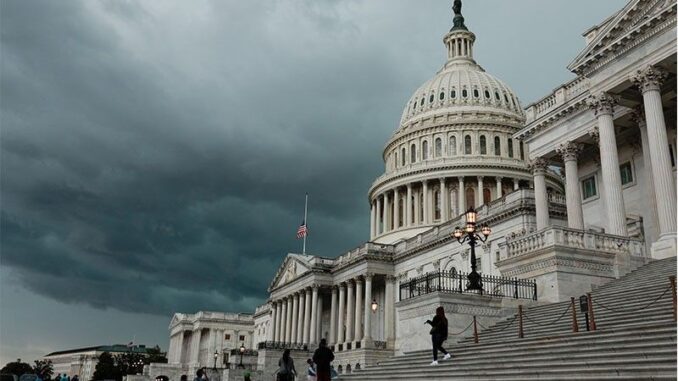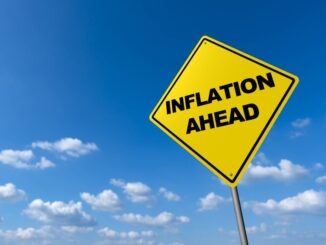
NEW YORK, United States — US consumer inflation slowed in March, according to data released Wednesday, but remained well above the Federal Reserve’s target despite numerous interest rate hikes over the last year.
The rate of inflation year-over-year fell to 5.0 percent last month from 6.0 percent in February, the smallest 12-month increase since May 2021, according to the Bureau of Labor Statistics.
The report showed a 0.1 percent increase in March over the prior month on a seasonally adjusted basis, much lower than the 0.4 percent reading in February and below analyst expectations as well.
Although greeted by President Joe Biden as a sign of progress, several commentators noted the inflation rate is far above the US central bank’s two percent target, adding that inflation remained elevated when food and energy costs were stripped out.
“The good news is that inflation continues to trend down, with prices increasing at their slowest pace since April 2021,” said Neil Saunders, managing director of GlobalData Retail.
“However, this is not a complete win as prices are still going up,” Saunders added. “This means many households continue to make choices about what and how to buy in order to balance their budgets. Inflationary behaviors are still prevalent among Americans.”
Analysts still expect the Fed to hike interest rates again next month, albeit by just a quarter percentage point, smaller than several recent increases.
Food and energy
Chief among the contributors to the milder inflation number was a significant drop in energy prices, offset by higher costs for housing.
Price hikes also accelerated in new vehicles and medical care commodities.
Food prices were flat in March, with prices for meats, poultry and fish falling, while cereals, bakery products and nonalcoholic beverages climbed.
Biden, pointing to the drop in gasoline and grocery prices, said the data “shows continued progress in our fight against inflation,” according to a White House statement.
“While inflation is still too high, this progress means more breathing room for hard-working Americans,” Biden said.
After years of anemic pricing pressure in the United States and other major economies, inflation roared back to life, beginning in 2021.
Key factors behind the resurgence included supply chain problems that crimped availability of key goods; generous government fiscal packages that kept consumer demand elevated; and the Russian invasion of Ukraine, which increased volatility in the energy market and curtailed supply of some commodities.
In response to soaring inflation, central banks have undertaken a period of aggressive interest rate hikes, including in March, when the Fed and European Central Bank lifted rates despite worries over banking industry instability.
Troubling signs
Even with the better headline figure in Wednesday’s report, analysts said that when food and energy were stripped out, a “core” inflation reading remained troublesome.
The year-over-year level of core inflation was 5.6 percent, up from 5.5 percent in the February report.
Noting that core services increased in March from the prior month, FHN Financial’s Chris Low predicted the latest data “will keep the Fed on its toes, supporting a May rate hike, and perhaps making the case the Fed should start thinking past the next meeting if it really wants to contain wage pressures.”
Prestige Economics’ Jason Schenker called the report “mixed,” noting that the state of the core figures “bolsters the potential for additional rate hikes in the immediate term to ensure high inflation rates do not plateau and remain stuck at these levels.”
Nonetheless, the report is the latest evidence that the Fed’s streak of interest rate hikes over the last year is weighing on economic activity.
While US labor market data has remained generally solid, recent reports on manufacturing and the services sector have shown signs of slowing.
After initially rallying on the inflation data, US stocks were lower at the end of Wednesday’s volatile session. The S&P 500 finished down 0.4 percent.
Source: www.philstar.com



